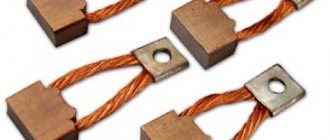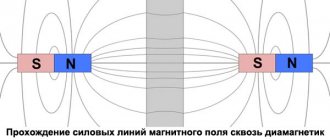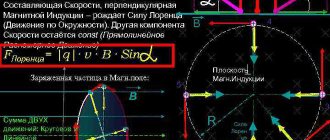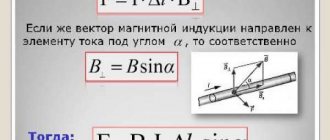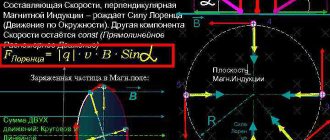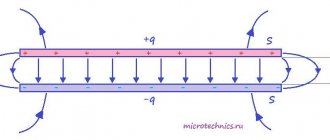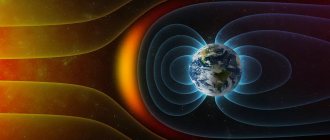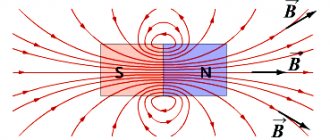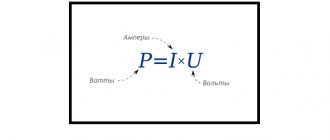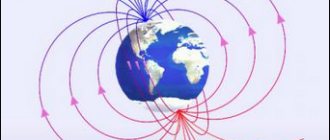The technology of sintering neodymium alloys, developed as a result of long-term research and experiments, makes it possible to create powerful magnets used in a variety of fields. Achieving high adhesive strength was not easy, but the developers did everything possible to give the world such a powerful alloy. The strength of a neodymium magnet is so high that it is simply impossible to find competitors for it. It should be noted that this is a record figure, which no one has yet managed to exceed. Existing traditional alloys lost this race - the power of a neodymium magnet and its safety in operation remained unattainable parameters for them.
Formation of magnetic field strength
The strength of a neodymium magnet is formed at the stage of its manufacture. Magnetization occurs only after the initial components are baked into an alloy. Existing technologies are capable of magnetizing the alloy so that its power will be incredibly high, reaching record values. For this, special formulas are used to form the mass of the initial components, as a result of which the final product turns out to be incredibly expensive. Fortunately, powerful neodymium magnets sold in stores are quite cheap, and alloys with indexes from N38 to N52 are available to everyone. As for the remaining modifications, they are distinguished by their resistance to high temperatures and strong impacts, as well as increased adhesive strength - such magnets are extremely rare on sale, since they are most often used in industry and research laboratories. The magnet production process is designed in such a way that after magnetization has passed, the strength of the alloy can no longer be changed. It is set once and for all, at the last stage of production. Subsequently, only slight natural demagnetization is observed, amounting to about 0.1% over 10 years, which is considered an extremely small indicator.
Characteristics of neodymium magnets
Rare-earth magnets, which include neodymium, have found their use in everyday life, as well as in various industries and the national economy. They are an indispensable part of modern technology, various mechanisms and a whole range of products, from souvenirs to devices actively used in everyday life. What such products are, as well as the characteristics of neodymium magnets, will be discussed in our conversation today.
Neodymium magnets: properties and characteristics
The magnets that became the topic of this material are, without exaggeration, considered the strongest permanent magnets. The formula of the products sounds like NdFeB, they are produced from a neodymium alloy to which iron and bromine are added. The finished product is characterized by increased magnetic induction and resistance to demagnetization. It is capable of serving for many decades, while demagnetizing by no more than 1% in 100 years.
Specifications
Neodymium products acquire their characteristics at the production stage; they do not change subsequently either during processing or during use. The main parameters are the so-called coercive force or resistance to demagnetization, as well as residual magnetic induction. The latter is measured in Teslas and Gauss; measurement in Gauss is more common.
The average residual induction of neodymium magnets is at the level of 2-5 thousand Gauss, but in some specimens this figure can reach 12-14 thousand Gauss. It is important to note that the residual magnetic induction depends on the size of the product, its shape and a number of other features.
An important nuance: neodymium magnets can perform their functions only at temperatures up to +80 degrees. As they heat up more, they turn into pieces of metal. The temperature indicator when a material loses its magnetic properties is called the Curie point. For neodymium products this point is at +80 degrees. However, if high-temperature alloys were used in the production process, the Curie point is reached at 180 degrees.
Speaking about the properties and characteristics of neodymium magnets, it is necessary to note their low anti-corrosion resistance. For this reason, products are treated with anti-corrosion compounds based on zinc, nickel or epoxy coatings.
Numbers and letters in designations: what do they mean?
The characteristics of neodymium magnets are reflected in the alphanumeric designations that accompany each product. Products are divided into classes according to the key parameter - operating temperature of application:
· N – used at temperatures up to +80 degrees.
· M – up to 100 degrees.
· H – up to 120 degrees.
· SH – up to 150 degrees.
· UH – up to 180 degrees.
· EH – up to 200 degrees.
As for sub-zero temperatures, they do not have a negative effect on the properties of magnets.
The numbers that follow the letter designation are an indicator of magnetic energy or power, which is also called pull-off force. This refers to the force required for the magnet to come off the surface.
More details about breakaway force
The pull-out force, measured in kJ/m3, represents the force required to lift a magnet from a surface. This indicator is measured in the so-called. ideal conditions, when the surface is a flat steel sheet, and the magnet is torn off from it strictly perpendicularly. The higher the number in the product nomenclature, the higher the pull-out force, that is, its power. This indicator also depends on the size and weight of the product.
For example, the characteristics of the N52 neodymium magnet indicate that its magnetic energy varies between 398-422 kJ/cubic meter. Such products are used in the production of generators and wind turbines; they are used to conduct experiments with supermagnets.
The characteristics of the N45 neodymium magnet indicate magnetic energy in the range of 342-366 kJ/cubic meter. Such products are made in the form of rings, blocks, disks, they are used in the production of souvenirs, toys, as well as in the automotive industry and in many other industries.
It is important to understand that the tearing force directly depends on the size of the product - the larger it is, the higher the specified parameter.
Coercive force
Another important property of magnets is their coercive force, which is the magnitude of the magnetic field that is needed to demagnetize the product. This indicator is of great importance in cases where the finished product is used in a strong magnetic field - next to the most powerful electrical components, etc. The value is measured in kiloamperes/meter.
What is adhesion force
The power of a neodymium magnet is a rather relative concept for ordinary people. That is, the magnetic field strength of such a magnet is stable, and it can be measured and recorded with special sensors and instruments. But such a parameter as adhesion strength depends on many factors, which should be taken into account when choosing magnets. For example, there is a dependence on the cleanliness of the metal surface and its thickness. The separation angle also has some influence. It is generally accepted that adhesive force refers to the force required to lift a magnet from a metal surface with a thickness of at least 10 mm. Of particular importance are the angle of application of force, temperature and humidity, the magnetic properties of the metal surface, and the presence of traces of corrosion. It should be noted that rust has the greatest impact on the adhesion force, which should be taken into account by owners of search magnets.
Interesting experiments
The scientist Hans Oersted devoted almost his entire life to electricity and magnets. Once, during a lecture at the university, he showed his students the following experiment. He passed a current through an ordinary copper conductor, after a while the conductor heated up and began to bend. This was a phenomenon of the thermal property of electric current. The students continued these experiments, and one of them noticed that electric current has another interesting property. When current flowed in the conductor, the needle of a nearby compass began to deviate little by little. Studying this phenomenon in more detail, the scientist discovered the so-called force acting on a conductor in a magnetic field.
The power of powerful magnets - examples
Neodymium super magnets are truly impressive. When confronted with their power for the first time, people express admiration and surprise. In order to be convinced of their capabilities, you need to pick up a small neodymium magnet, attach it to a smooth and clean metal surface, and then try to tear it off. If you choose a 5x3 mm disk magnet for these purposes, then you will have to apply a force of 0.5 kg to tear it off. Small magnets are often found in magnetic badges that adhere securely to garments without damaging the fibers. It will be much more difficult to tear off a 45x15 mm disk magnet from the same surface, since the adhesion force in this case will be 65 kg. Magnetic disks with dimensions of 70x50 mm have the greatest strength - these are one of the largest disk-shaped neodymium magnets.
Physical Features
In general, it should be understood that any magnetic phenomena arise only when charges move inside a conductor or when there are currents in them. When studying magnets and the very definition of magnetism, it should be understood that they are closely interrelated with the phenomenon of electric current. Therefore, let's understand the essence of electric current.
Electric force is the force that acts between an electron and a proton. It is numerically much greater than the value of the gravitational force. It is generated by an electric charge, or more precisely, by its movement inside a conductor. Charges, in turn, are of two types: positive and negative. As you know, positively charged particles are attracted to negatively charged ones. However, charges of the same sign tend to repel.
So, when these same charges begin to move in a conductor, an electric current arises in it, which is explained as the ratio of the amount of charge flowing through the conductor per second. The force acting on a current-carrying conductor in a magnetic field is called the Ampere force and is found according to the “left hand” rule.
Restrictions on use
Even this excellent device has its weaknesses. In total, such a magnet has 2 minuses. These shortcomings are easily solved, so they rarely become a reason to refuse a purchase.
- Heat. This alloy tolerates elevated temperatures extremely negatively. More than +80 is lethal for its unique properties. The most suitable mode varies from -50 to +50.
- High humidity. Most often, a magnet is used under water, in conditions of complete immersion. This does not affect the magnet itself, but at the same time the shell quickly corrodes. The problem can be solved by simply maintaining the device. After each use, you need to clean off any rust that has appeared and remove any remaining water. Do not store in a place with high humidity.
Rules for working with a magnet
When working with a magnet, the following troubles may arise:
- rope break;
- slipping of the device from the smooth surface of a large object;
- loss of the device itself due to unreliable fastening.
To ensure safe, high-quality and successful searches, it is necessary to pay attention to all these points and take measures to eliminate them. It is important not only to choose a rope, but also to secure the device correctly and use the correct casting technique.
Ways to bind a search magnet
There are several effective knots that are often used to tie a magnet for searching: nautical, academic, surgical, constrictor. The first is the most popular, which is mainly used. The rest are often tied as additional ones, alternately, for greater strength. This way the magnet will never get lost.
Basic Precautions
Be careful when handling neodymium search magnets. This is a powerful and serious device that disables equipment and causes injuries in a couple of seconds. The magnetic field easily deletes information from bank cards, hard drives, and breaks pacemakers.
Be sure to use additional hand protection. Since the devices develop a large magnetizing force, your hands may suffer. The two search engines have double the strength and easily crush the fingers between them.
Magnets can stick to metal items at high speeds, even through a pocket. If you carry it in your hands by the ring and walk past a metal structure, you can easily get a fracture of the phalanx.
The magnets are incredibly fragile, although they have a high power rating. If dropped or suddenly released for gluing, it may simply crack and lose its properties.
Features of transportation and storage
A strong magnetic field damages equipment and electronics. To minimize the possibility of damage, follow safety precautions during storage and transportation.
It is better to keep any equipment, such as a mobile phone, GPS tracker, electronic watch, away. During search work, leave it in the car, do not carry it with you all the time. After finishing the search, do not approach the machine with the magnet immediately. Otherwise, a dent on the body is guaranteed.
At home, do not store it near the refrigerator, TV, or microwave oven. For safe transportation and storage there is a special non-magnetic container. It could be a wooden box, a special bag, or others. Through them, the magnetic field does not spread around and does not affect the environment.
Magnet energy or EMF
Like any physical phenomenon, a magnetic field has energy, which it expends to move a charge. There is a concept of EMF (electromotive force), it is defined as the work of moving a unit charge from point A0 to point A1.
EMF is described by Faraday's laws, which apply in three different physical situations:
- The conductive circuit moves in the created uniform magnetic field. In this case we talk about magnetic EMF.
- The circuit is at rest, but the source of the magnetic field itself is moving. This is already a phenomenon of electric emf.
- And finally, the circuit and source of the magnetic field are stationary, but the current that creates the magnetic field changes.
Numerically, the EMF according to Faraday’s formula is equal to: EMF = W/q.
Therefore, electromotive force is not a force in the literal sense, since it is measured in Joules per Coulomb or Volts. It turns out that it represents the energy that is imparted to the conduction electron when going around the circuit. Each time, making another round of the rotating frame of the generator, the electron acquires energy numerically equal to the emf. This additional energy can not only be transferred during collisions of atoms in the external circuit, but also released in the form of Joule heat.
Basic precautions when using search magnets
To ensure that working with a search magnet brings only positive emotions and impressions, you must remember to follow basic safety measures:
1) Protective gloves. During search operations, small sharp fragments of iron and rust are inevitably found at the bottom of reservoirs or in littered areas. Be careful when cleaning the surface of the product. Thick protective gloves are a must.
2) Take care of your fingers. The attractive force of the most powerful f600 search magnet models reaches 600 kg. Never allow parts of your body to come between a heavy metal object and the working surface of the product.
3) Use the magnet correctly. To lift the product from a large object, use an eye bolt. When working, always hold the search magnet strictly by the mount.
How to strengthen the effect of a permanent magnet?
Strengthening or weakening of a magnet can be done by heating or cooling it relative to this point itself. Thus, heating above the Curie point or strong cooling (much below it) will lead to demagnetization.
Interesting materials:
How does temperature affect washing? How to accurately select an object in Photoshop? How to stream from PC to Xbox One? How to spend coins in UFC 4? How to escape from a tyrant husband? How to remove Autopayment? How to remove an ava on VKontakte without deleting a photo? How to remove large spaces between lines in Word? How to remove black deposits from a mug? How to remove the birthday date in Odnoklassniki?
Use in difficult conditions
The most valuable and interesting finds are hidden in places inaccessible to humans. Search magnets are designed for use precisely in those places where a metal detector cannot reach. The magnet is lowered to a depth on a special rope. To do this, it is most practical to use a double-sided device with side mounting. It is thrown into the water like a drag, from a boat or from the shore.
The magnet works best at a distance of no more than 10 cm. This way, even the largest elements will be captured. On sand or land, the catch literally flies out on its own. Underwater, among the silt, it will be a little more difficult. Therefore, you need to bring it closer and pull harder. If an object is stuck in the ground, it must be dug out manually. Large items are retrieved using a special automated winch. Coins, keys, badges, weapons are quite easy to pick up, it does not require special skills.

